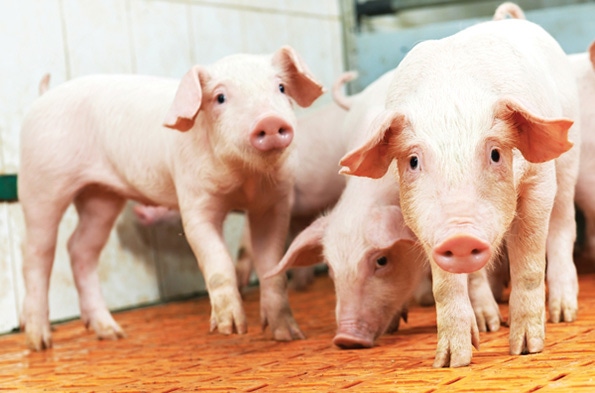March 26, 2015

Feed is the largest single cost of pork production, with dietary energy being the most costly component. It is estimated that approximately 50% of the total cost of pork production is due to meeting dietary energy requirements.
A variety of measures are available to allow producers to understand current production and to make informed management decisions regarding feed. John Patience, professor at Iowa State University, emphasized at the Banff Pork Seminar that feed conversion, or feed efficiency, can be a useful tool and that optimizing feed efficiency contributes greatly to overall farm success. However, producers need to understand exactly what is being measured and how to interpret this data, otherwise costly mistakes can be made.
Patience explains that the definition of feed efficiency has changed over the years, and producers can express feed efficiency in many different ways, but they need to ask themselves what question they are trying to answer and how they are going to use the information. What information do they need to make a management decision? Producers also need to understand what influences feed conversion and where the numbers come from in order to make appropriate management decisions. Feed efficiency, therefore, must be considered in the context of other performance and financial outcomes.
“We may have to alter our mindset from targeting maximal performance to targeting suboptimal performance, because this is how farm net income can be maximized,” Patience says.
There are many factors that influence feed efficiency, including diet, environment, genetics and health status, which makes it difficult to set benchmarks and compare feed efficiency values from farm to farm.
In his seminar, Patience discussed some of the factors that affect feed efficiency in more detail.
Measuring feed efficiency: As mentioned before, there are many ways in which feed efficiency can be measured, and the interpretation of results can be difficult. Production data that is included in calculations of feed efficiency can drastically change interpretation of results. For example, in one study (Gaines, et al. 2012) comparing feed efficiency in two groups of pigs, it was demonstrated that while the two groups appeared to have the same feed efficiency (2.84 versus 2.86), this interpretation changed when adjusting for different starting weights (2.66 versus 2.80) and mortality (2.62 versus 2.77). This emphasizes the point of the importance of understanding what feed efficiency is measuring, what you include in your calculation, and how this can change your interpretation and management decisions.
Diet formulation and ingredient selection: Formulating according to least cost based on dollars per ton may minimize the cost of a given feeding program but may not be sufficient with respect to energy and feed efficiency. When examining ingredient cost, it is important to consider both the changing cost per unit of energy within an ingredient as well as the changing price relationships among ingredients. For example, in 2005, the cost of energy from fat was approximately 60% more than from corn, but in 2013, fat was only 36% more than corn. These changing feed costs and price relationships between feed ingredients can influence how ingredients are used in feeding programs.
Genetics: It is widely accepted that differences in feed efficiency exist across genetic lines. Selecting for low residual feed intake (the difference between expected and actual feed intake) has resulted in remarkable improvements in feed intake (-13%), feed efficiency (+7.4%) and back fat thickness (-14%).
However, Patience notes that “selecting for feed efficiency can be problematic, as it can result in animals with poor feed intake and thus slower growth.” Indeed, the previously mentioned improvement in feed intake was accompanied by a reduction in daily gain (-6%). Feed efficiency, therefore, may be increased to maximize net income without necessarily maximizing growth.
Pig management: Poorly designed feeders and management of feed delivery can lead to excessive feed waste and reduced feed efficiency. How a pig distributes energy between maintenance and growth can play a significant role in feed efficiency. Therefore, factors that affect maintenance or growth will influence feed efficiency, and environmental management, such as temperature, must be considered.
“Even modest improvements in feed efficiency can be highly beneficial to net income,” Patience says, but producers must ensure that the cost of these improvements does not outweigh the potential benefits. It is important to remember that achieving the most economical feed efficiency may not always translate to the best growth performance. Feed efficiency must not be analyzed in isolation, and an understanding of what influences this value is critical for making informed management decisions.
You May Also Like



